Birds on the Skids in Ennore Captured In Frames

The oil spill in northern Chennai’s Ennore during Cyclone Michaung in early December adversely impacted the eco-sensitive Ennore Creek and the Kosasthalaiyar River. Mangroves, aquatic life, and migratory birds that flock to the creek in substantial numbers were covered in slick and oily sludge.
The wetlands of the Ennore-Manali region are known to host several bird species including open-billed storks, cormorants, egrets, spot-billed ducks, grebes, pelicans, common coots, black-winged stilts, red-wattled lapwings, and pond herons. However, birdlife in the creek dropped drastically in the first two weeks of December as a result of the oil spill. The State Environment, Climate Change and Forests Department (ECCF) estimated that over 50 pelicans — spot-billed pelicans being the most affected due to their feeding style — and other birds had died, and roped in the Wildlife Trust of India (WTI) and the Besant Memorial Animal Dispensary (BMAD) to rescue the surviving birds. Supriya Sahu, Additional Chief Secretary to ECCF, said a rapid assessment report was carried out to take stock of the avifauna in the creek.
With several pelicans having flown to other wetlands of the city, the expert team found about two dozen in need of intervention. Although parts of the river are not ideal for rescuing birds, the team has so far managed to rescue eight pelicans. Speaking to The Hindu, NVK Ashraf, Chief Veterinary Officer and Vice President at WTI, said all eight are feeding well and the birds are gradually being moved to larger enclosures to check their movement. Around 30 more pelicans need attention and it will take another month to rescue them, he said.
(Text by: Geetha Srimathi)
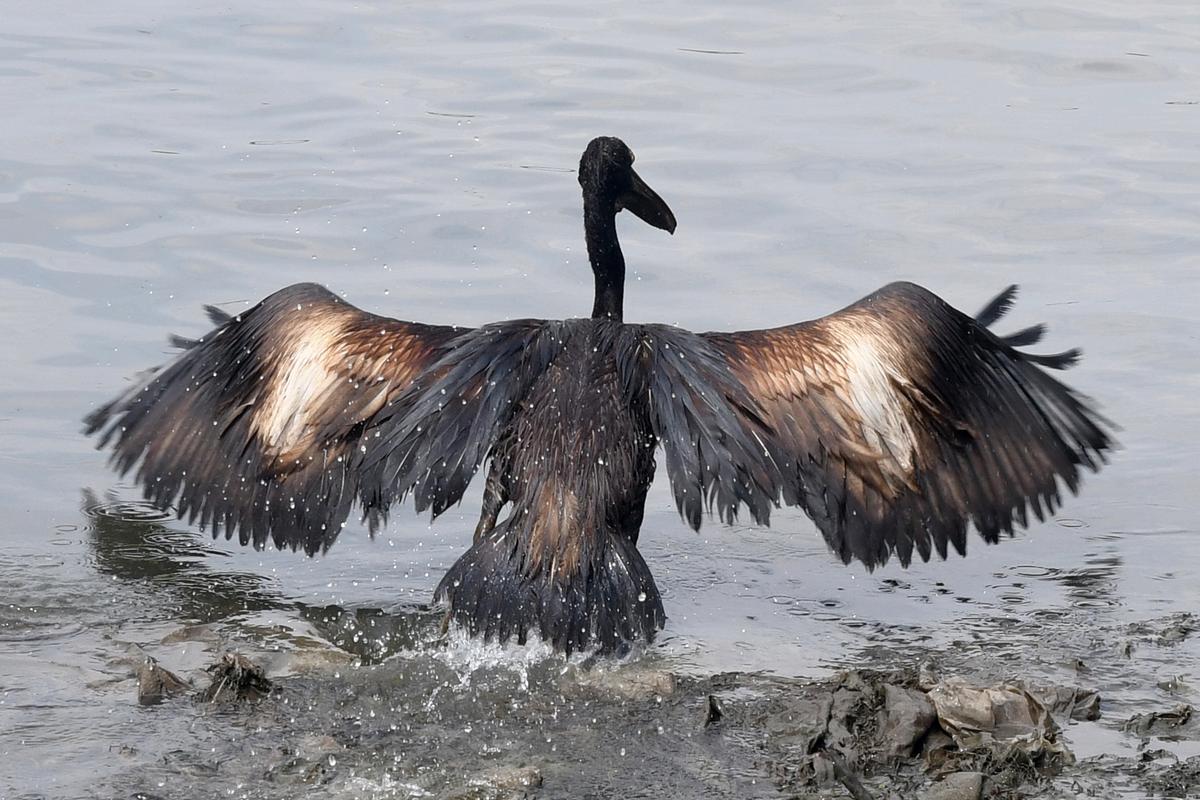
Photo:
B. Jothi Ramalingam
Flight at risk: A pelican adversely impacted by the oil spill attempts to fly.
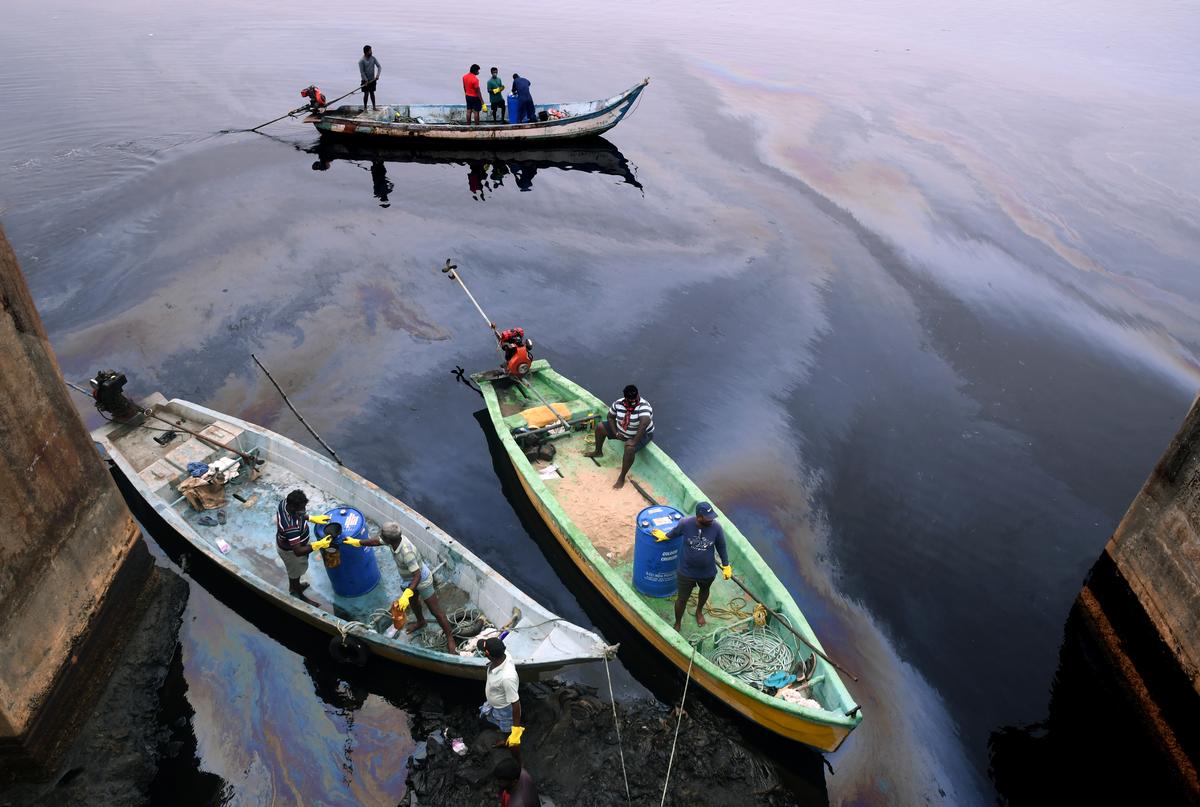
Photo:
B. Jothi Ramalingam
Hard at work: Fishermen engaged in removing oil from the
wetlands of Ennore-Manali
in the aftermath of the oil spill.
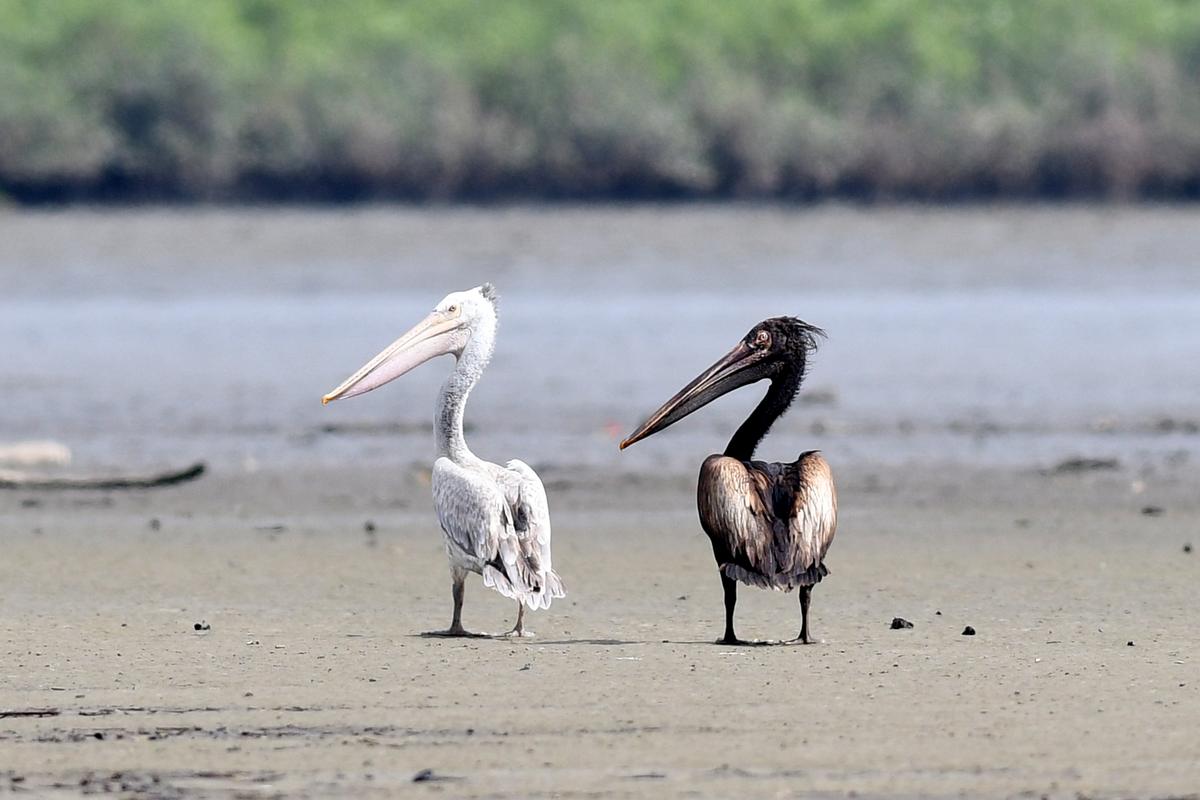
Photo:
B. Jothi Ramalingam
Different shades: Two spotbilled pelicans in Ennore. Impact of the oil spill is visible on the darker pelican.
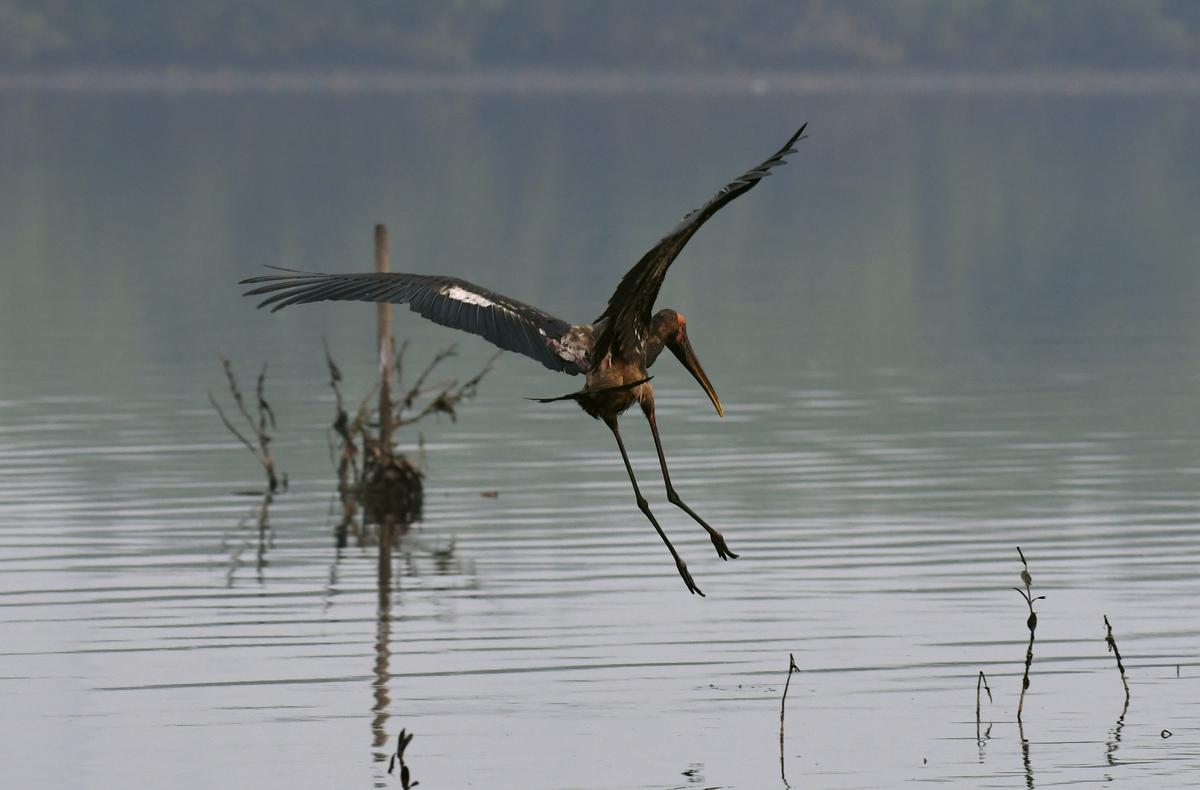
Photo:
B. Jothi Ramalingam
Heavy wings: A painted stork struggles to fly from the
Kosasthalaiyar River, with its wings heavily affected by the oil spill.
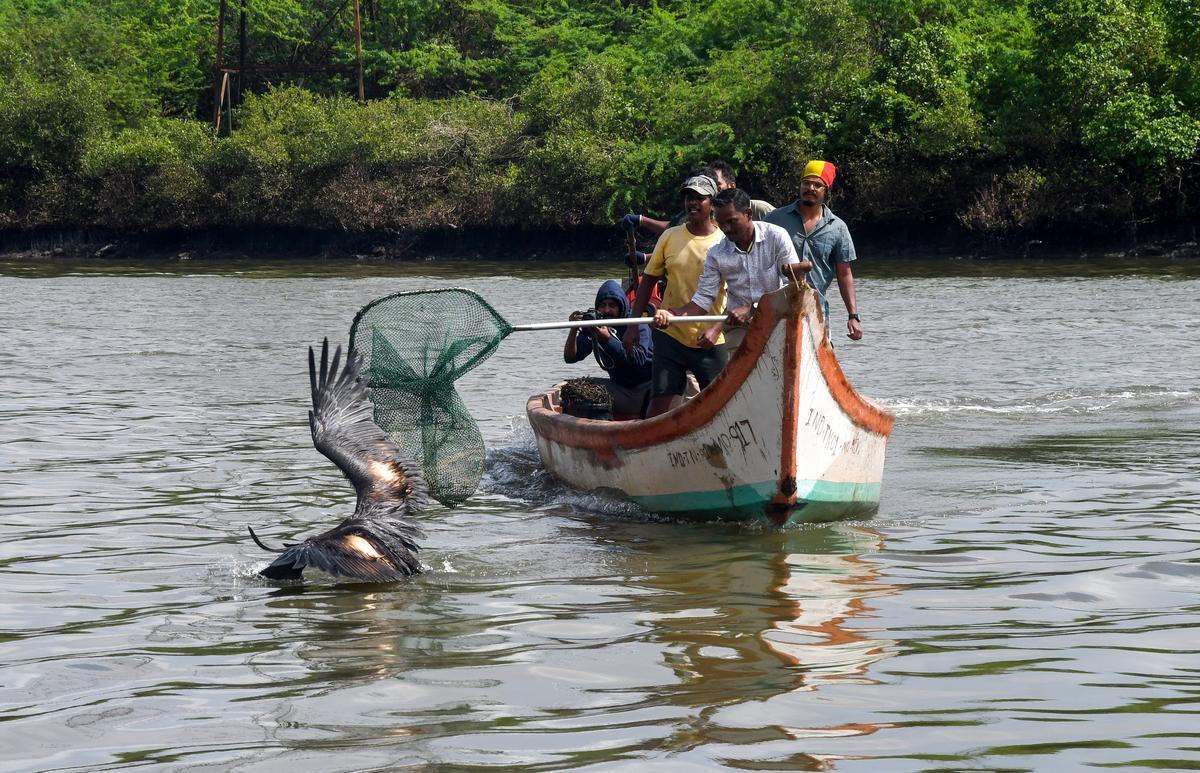
Photo:
B. Jothi Ramalingam
Saftey net: Experts rescue a pelican affected by the oil spill.
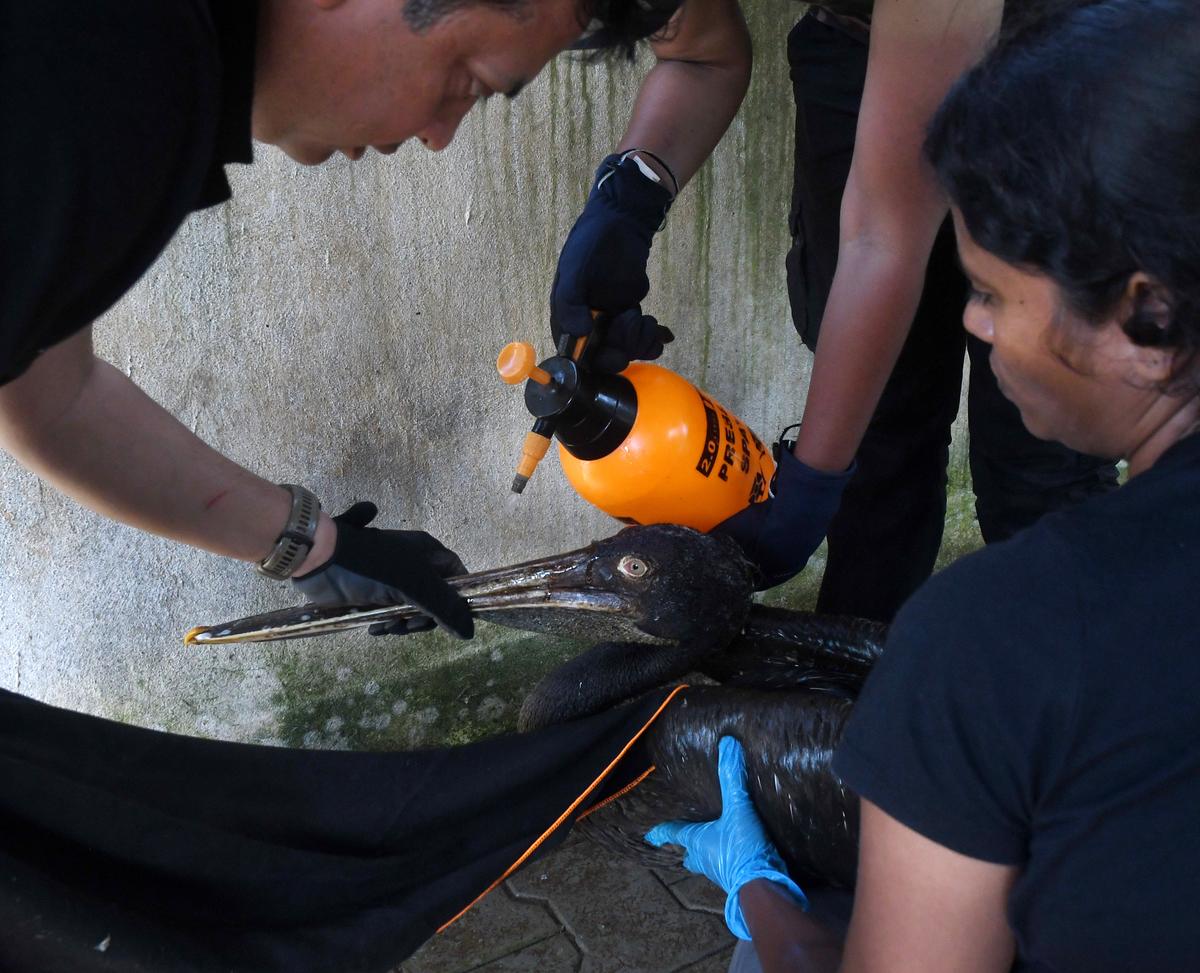
Photo:
B. Jothi Ramalingam
Thorough cleaning: Experts cleaning a bird rescued from the Kosasthalaiyar river using a mild solution of soap and vegetable oil.
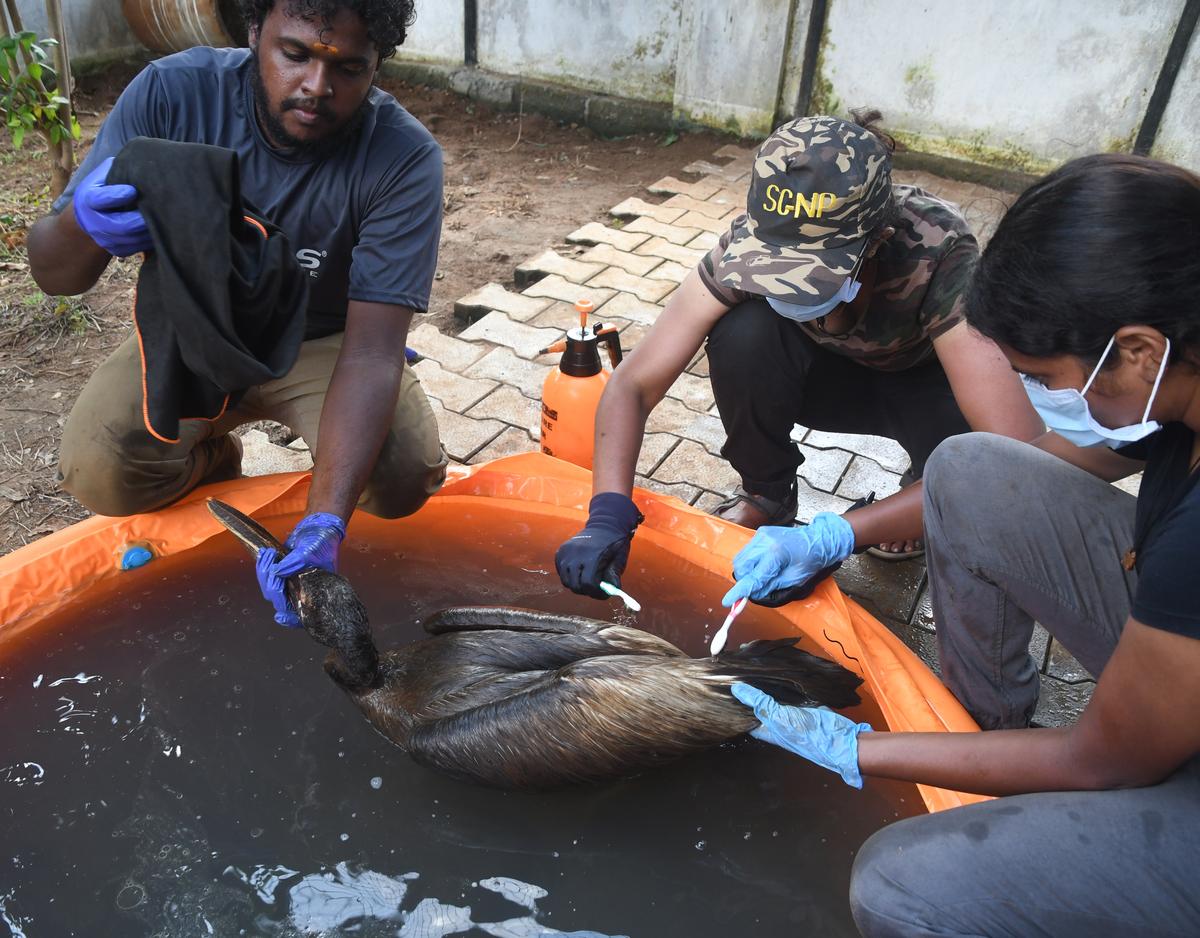
Photo:
B. Jothi Ramalingam
Brushing off: A
rescued pelican being
cleaned at Guindy
National Park.
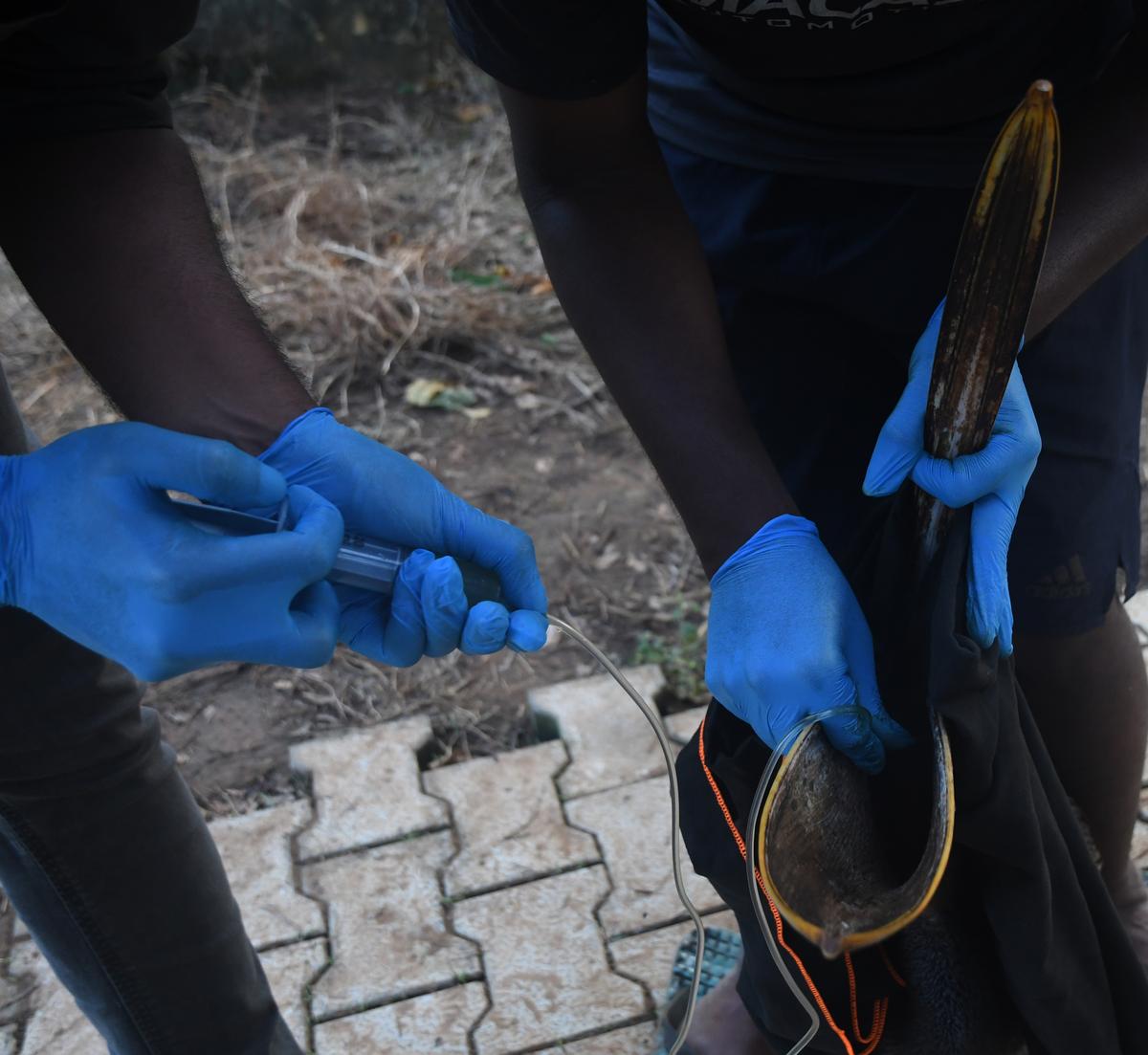
Photo:
B. Jothi Ramalingam
Intense care: Experts
feed fish soup to a
weak pelican at
Guindy National Park.
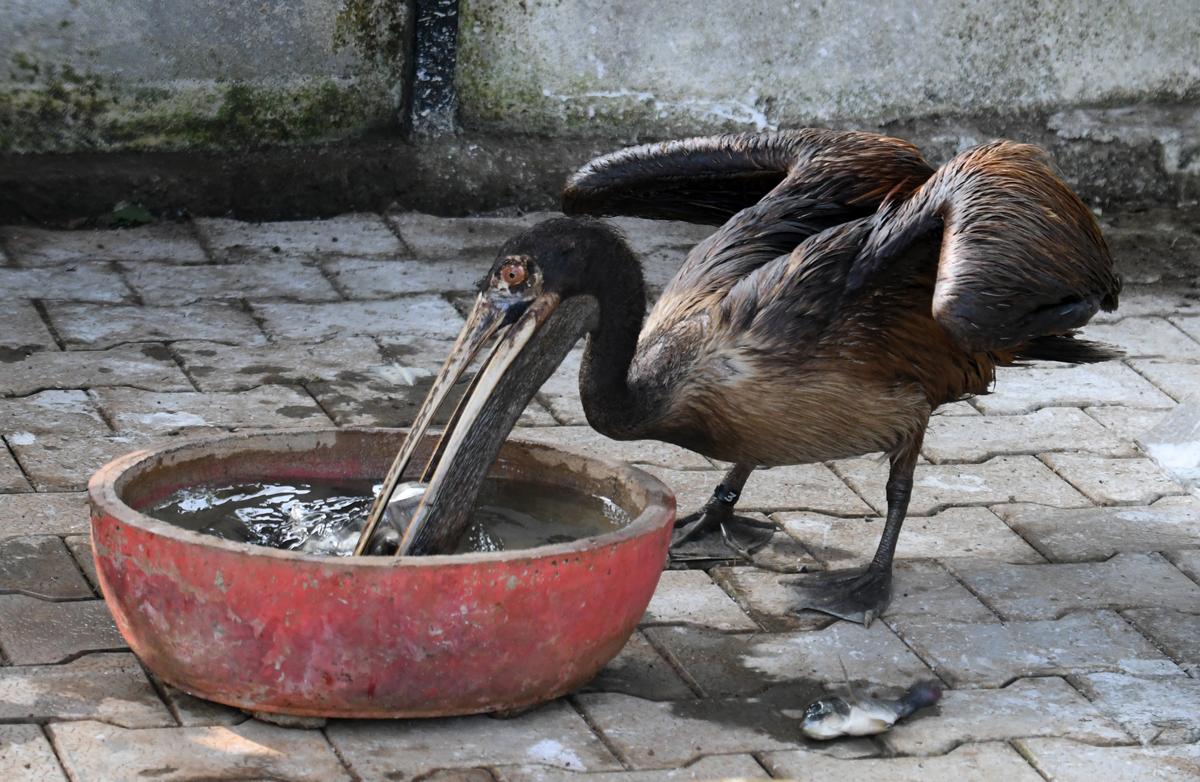
Photo:
B. Jothi Ramalingam
Recovery route: A pelican under rehabilitation at Guindy National Park feeds on live fish.
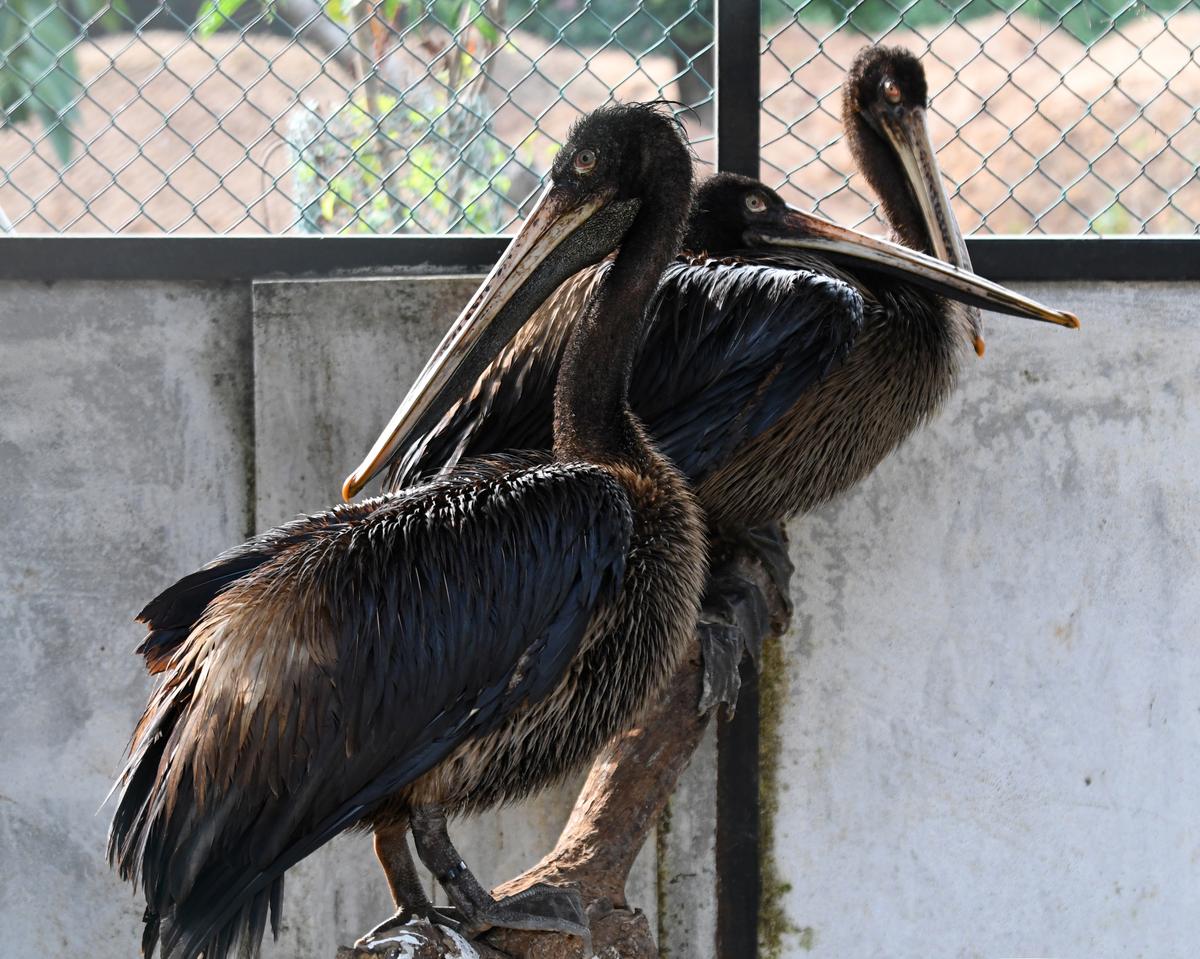
Photo:
B. Jothi Ramalingam
Waiting to fly: Experts say
that it would take at least a
month of regular cleaning
and treatment before the
birds are good to fly away.
(The following story may or may not have been edited by NEUSCORP.COM and was generated automatically from a Syndicated Feed. NEUSCORP.COM also bears no responsibility or liability for the content.)






